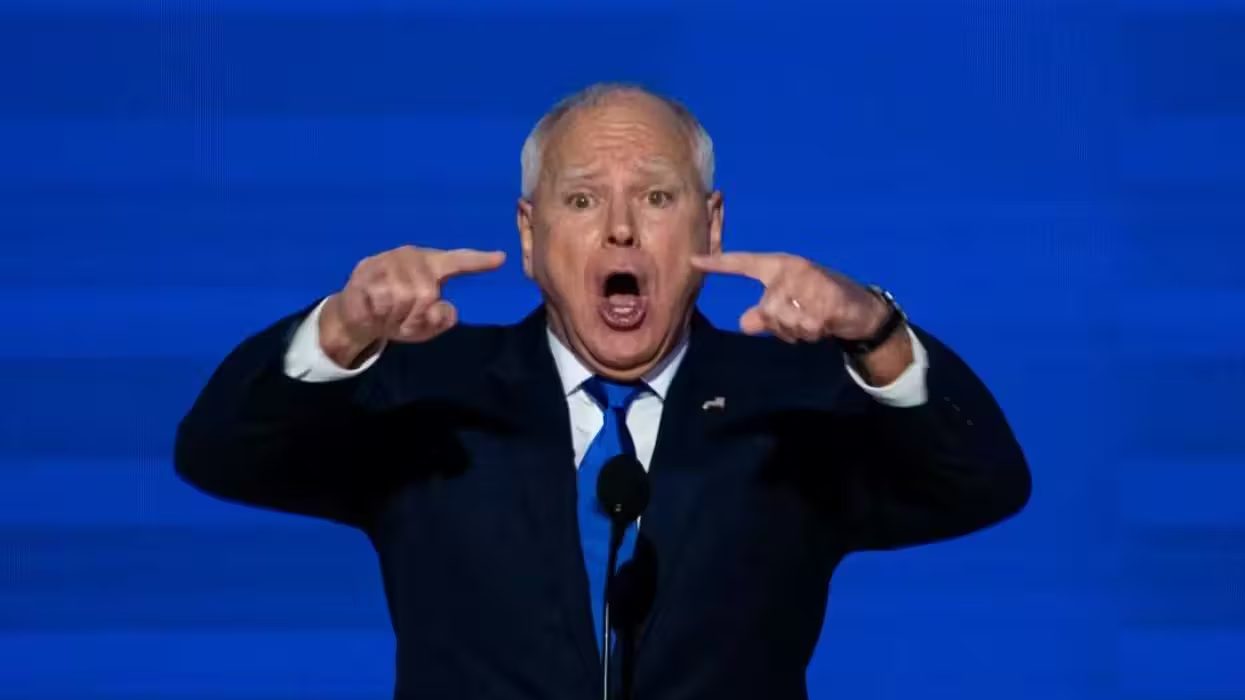
© 2026 Blaze Media LLC. All rights reserved.
President Trump’s administration is taking the federal government’s first steps towards fiscal sanity with a new budget proposal for fiscal year 2018. Yet, conservatives should proceed with caution.
It bears the grandiose name “A New Foundation for American Greatness,” and indeed, conservatives who voted for President Trump have high expectations from this budget. On the surface there is a lot that is praiseworthy.
The budget aims to balance in 10 years. There are $4.5 trillion in spending reductions to achieve this – the most proposed by any president. The administration is touting that the plan will reduce the national debt to 60 percent of GDP, the lowest level since 2010. These details are excellent.
There are several important reforms to government programs as well. States will be given an option to accept Medicaid block grants. Eligibility for welfare programs like SNAP will include work requirements to encourage individuals to reenter the workplace and contribute to the economy. Illegal immigrants will no longer be able to benefit from the Earned Income Tax Credit and Child Tax Credit programs at the expense of American taxpayers. And some foreign aid programs will be restructured from direct grants to loans. These and other reforms are meant to make the government leaner, more efficient, and to give taxpayers a better bang for their buck.
“If I had a subtitle for this budget it would be the ‘taxpayer-first budget,’” Office of Management and Budget director Mick Mulvaney told reporters Monday. “This is, I think, the first time in a long time that an administration has written a budget through the eyes of the people who are actually paying the taxes.”
Explaining the budget, Mulvaney stressed that Trump’s priorities received more money while the president kept his promise to seek spending reductions in areas that are wasteful or ineffective.
The budget includes $44.1 billion for the Department of Homeland Security and $27.7 billion for the Department of Justice, reflecting the president’s commitment to law enforcement. There is $2.6 billion for border security technology – including funding for the wall.
Also included in the budget are some of the president’s less conservative campaign promises. The budget accounts for Trump’s proposed $1 trillion investment in American infrastructure. Additionally, “[f]or the first time ever, by any administration of any party, we are proposing a nationwide paid parental leave [program],” Mulvaney announced. The new entitlement will cost $25 billion over the next 10 years.
The administration justifies what many conservatives will object to as extravagant expenses as necessary to foster the conditions for economic growth.
“What Trumponomics is, and what this budget is a part of, is an effort to get to sustained 3 percent economic growth in this country again,” Mulvaney said. “You can never balance the budget at 1.9 percent growth.” Mulvaney claimed the paid maternity leave entitlement, for example, is part of an effort reassure parents that they will not be forced to exit the workforce if they decide to have children. People need to go back to work for the economy to grow, Mulvaney argued.
Will all the good and the bad in this budget – and there is much of both – conservatives should keep in mind two important realities of budget politics.
First, the Trump plan is worth about as much as a campaign promise. The budget calls for more money for the president’s priorities – national security, border security, veterans, and school choice. It cuts other wasteful programs to pay for these increases and balance in 10 years.
None of that matters if Congress does not approve of these spending cuts.
Government budgets are guidelines for the appropriate levels of spending in congressional appropriations bills. The budget does not set hard rules for Congress to follow. Appropriations bills often exceed their budgetary restrictions.
The plan the Trump administration will unveil Tuesday is a guideline for the guidelines.
When the administration first revealed its skinny budget a few months ago, congressional Republicans were unwilling to fight for Trump’s priorities. The GOP capitulated, and Democrats were actually able to throw some of Trump’s proposed cuts back in his face by securing increased funding for programs the president wanted to cut. To avoid a government shutdown, President Trump signed the $1.1 trillion bill funding none of his priorities into law.
This time must be different.
President Trump needs to commit to vetoing a bill that doesn’t adopt a significant foundation of this budget. Until he does, these proposals are not worth the paper they’re printed on.
Second, the mainstream media are lying to you when they say Trump is cutting spending. This budget does not cut anything. It simply slows the growth of government spending.
Taking the government’s infamously optimistic projections, at the end of 10 years government spending will increase from $4.1 trillion in 2018 to $5.7 in 2027– a growth in government spending of approximately 40 percent. While the administration is targeting 3 percent economic growth annually, the average growth of government spending under this proposal is 4 percent per year for the next 10 years.
Think of it. The growth of government spending is set to outpace the administration’s projections for economic growth. But you won’t hear that anywhere on the cable news, or read it in the papers.
Instead, the mainstream media will claim that Trump is proposing a “massive” $610 billion cut to Medicaid over 10 years. What is really going on is Medicaid spending will increase by about $610 billion less over the next 10 years than was projected by the baseline Obama-era spending levels. Instead of spending $688 billion on Medicaid in 2027, the Trump administration wants to spend $524 billion, still billions more than the $368 billion the government spent on Medicaid in 2016.
The reality of the situation is that even cuts to the growth of spending are intolerable for the Left and for the media, but I repeat myself.
To put this in words familiar to the president, the pushback on Trump’s budget will be tremendous. The pressure on members of Congress to surrender on key parts of Trump’s priorities will be unbelievable. The sound and the fury from the Left will be unlike anything you have seen or heard at any point until now during the Trump presidency. Big league.
The only weapon President Trump can wield to defend his priorities is the veto pen. Let us hope it proves the mightier.
Want to leave a tip?
We answer to you. Help keep our content free of advertisers and big tech censorship by leaving a tip today.
Want to join the conversation?
Already a subscriber?
more stories
Sign up for the Blaze newsletter
By signing up, you agree to our Privacy Policy and Terms of Use, and agree to receive content that may sometimes include advertisements. You may opt out at any time.
Related Content
© 2026 Blaze Media LLC. All rights reserved.
Get the stories that matter most delivered directly to your inbox.
By signing up, you agree to our Privacy Policy and Terms of Use, and agree to receive content that may sometimes include advertisements. You may opt out at any time.






